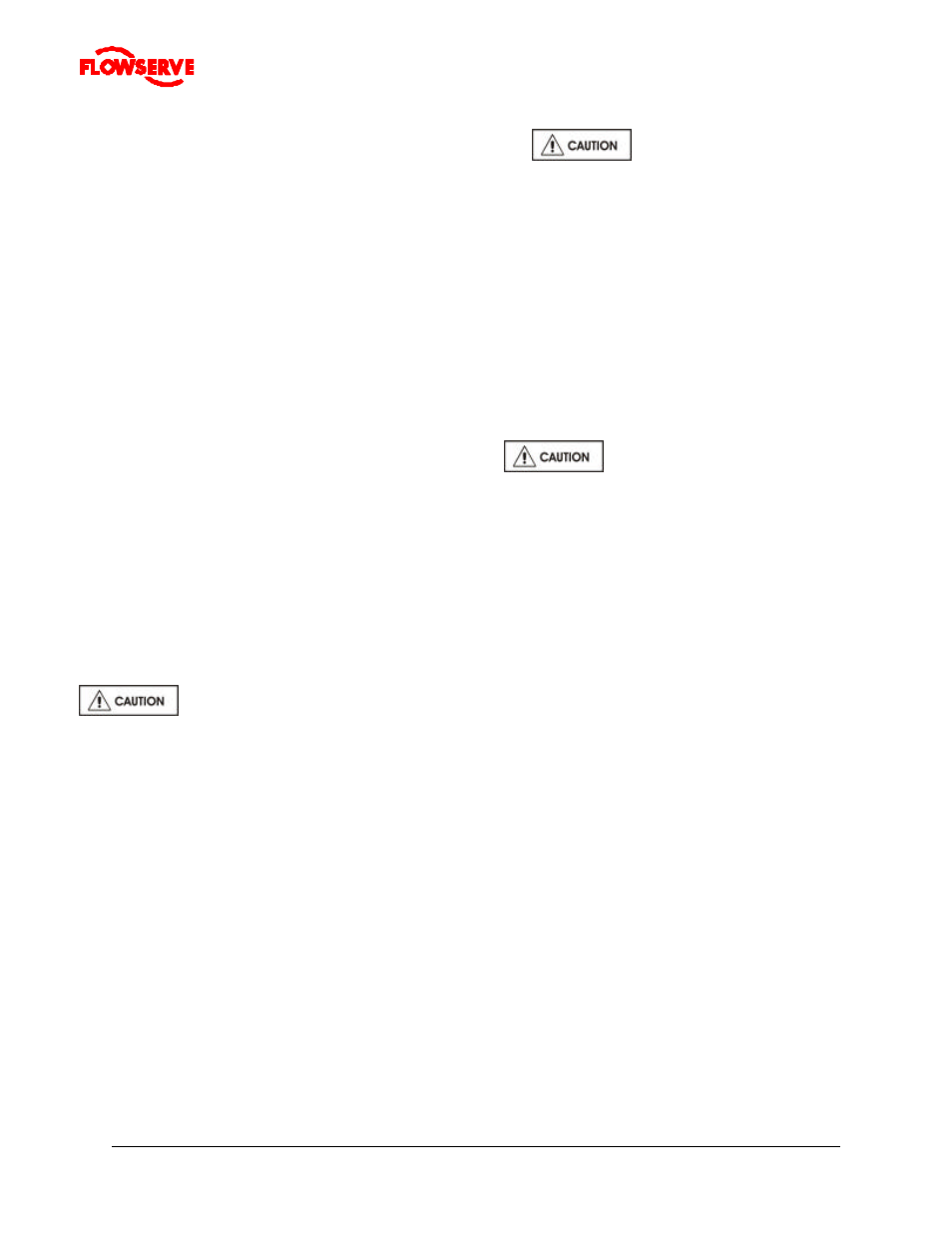Flowserve Gearex Rotary Gear Pumps External and Internal Bearing User Manual
Page 35

EXTERNAL GEAREX USER INSTRUCTIONS ENGLISH 71569246 (2167B-E1)
Flowserve Pump Division 35
®
c) Check for any leaks from gaskets and seals.
The correct functioning of the shaft seal must be
checked regularly.
d) Check bearing lubricant level, and if the hours
run show a lubricant change is required.
e) Check that the duty condition is in the safe
operating range for the pump.
f) Check vibration, noise level and surface
temperature at the bearings to confirm
satisfactory operation.
g) Check dirt and dust is removed from areas
around close clearances, bearing housings and
motors.
h) Check coupling alignment and re-align if
necessary.
i)
Rotate idle pump shafts by hand to check for free
turning.
Our specialist service personnel can help with
preventative maintenance records and provide
condition monitoring for temperature and vibration to
identify the onset of potential problems.
If any problems are found the following sequence of
actions should take place:
a) Refer to section 8 FAULTS; CAUSES AND
REMEDIES, for fault diagnosis.
b) Ensure equipment complies with the
recommendations in this manual.
c) Contact Flowserve if the problem persists.
6.2.1 Routine inspection (daily/weekly)
The following checks should be made
and the appropriate action taken to remedy any
deviations:
a) Check operating behaviour. Ensure noise,
vibration and bearing temperatures are normal.
b) Check that there are no abnormal fluid or
lubricant leaks (static and dynamic seals) and
that any sealant systems (if fitted) are full and
operating normally.
c) Check that shaft seal leaks are within acceptable
limits.
d) Check the level and condition of oil lubricant. On
grease lubricated pumps, check running hours
since last recharge of grease or complete grease
change.
e) Check any auxiliary supplies eg heating/cooling
(if fitted) are functioning correctly.
&
Refer to the manuals of any associated
equipment for routine checks needed.
6.2.2 Periodic inspection (six monthly)
a)
Check foundation bolts for
security of attachment and corrosion.
b) Check pump running records for hourly usage to
determine if bearing lubricant requires changing.
c) The coupling should be checked for correct
alignment and worn driving elements.
&
Refer to the manuals of any associated
equipment for periodic checks needed.
6.2.3 Re-lubrication
Lubricant and bearing temperature analysis can be
useful in optimizing lubricant change intervals. In
general however, the following is recommended.
6.2.3.1 Oil lubrication
Maintaining the correct oil level is very
important.
If the pump is supplied with a constant level oiler the
oil level will be automatically maintained and as long
as oil is visible in the glass bottle there is no need to
refill. If however a sight glass has been fitted then
regular checks should be made to ensure the level is
maintained at the centre of the glass window.
Refer to section 5.2.2 Recommended fill quantities
for external bearing pump for methods of oil fill and
5.2.5 Lubrication schedule for external bearing pump
for the schedule and temperature limits.
6.2.4 Mechanical seals
No adjustment is possible. When leakage reaches
an unacceptable level the seal will need replacement.
6.2.5 Gland packing
The stuffing box split gland can be completely
removed for re-packing or to enable the addition of
extra rings of packing.
The stuffing box is normally supplied with a lantern
ring to enable a clean or pressurised flush to the
centre of the packing. If not required, this can be
replaced by an extra two rings of packing.
To re-pack the stuffing box, remove the gland, the old
packing and the lantern ring (if applicable). Ensure
that all packing has been removed and that the
stuffing box bore and shaft are clean and free of
foreign material. If the shaft is worn or scored it
should be repaired or replaced. On new units ensure
that the lantern ring is not installed in the bottom of
the stuffing box.
